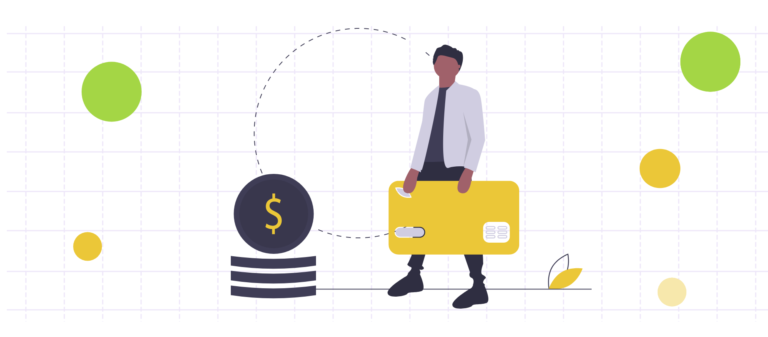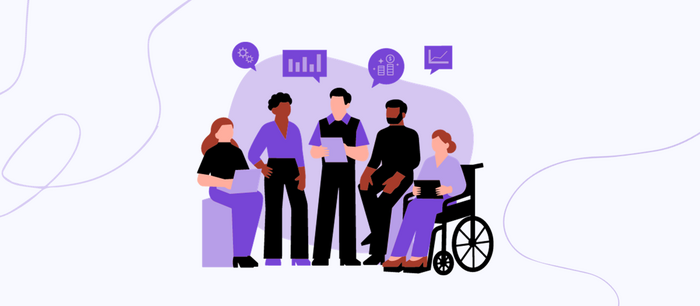5 Steps to Creating an Effective Donor Journey Map

Whether you help run an established nonprofit with a proud history or a brand new startup nonprofit just getting on its feet, having a plan that guides your organization is always going to be helpful. Whether you’re creating a marketing plan, scheduling donor surveys, or sketching out a P2P campaign, a good strategy helps you understand where you are where you’re going.
But what about your donors? It’s one thing to know what’s happening at your organization, but it’s something altogether different to know what your donors’ patterns are, where they are in their personal cycle, and whether or not you can count on their continued support.
And that’s why you need to map your donor journeys.
What Are Donor Journeys?
A donor journey is a powerful technique you can use to understand the individual donors who are so important to the continued success of your organization.
It’s a model that provides a framework to help you track how and when your supporters give and communicate with you, and why they make the giving choices they do.
Understanding each stage of the donor’s cycle is your window into how to reach them with the right message at the right time. And you can lay it out visually, like a map, so it’s easy to follow and you’ll know just what to do at just the right time.
Why Are Donor Journeys Important?
With so many nonprofits fundraising regularly, getting someone to give to your organization just once is a feat in itself. Getting them to remain loyal to your cause and give year-after-year? That requires planning.
With so many options in the nonprofit marketplace, donors will give wherever and whenever they want if left to their own devices. So it’s important to remember one simple truth: you need them, they don't need you. You are dependent on your donor base to balance your books and ensure the longevity of the valuable work you do, so you better try to keep them.
According to this study, a huge percentage of donors stop giving for reasons that are completely within your power to control, namely, poor donor communications. But not all who wander are lost, you just need a map.
Mapping the donor journey helps you create lasting, personal connections with your supporters, deepening their connection to your cause and encouraging a foundation of commitment that leads to regular giving. It’s your best tool to tailor the donor experience to the people whom you rely on most.
The Five Steps on the Donor Journey
Traditional thinking on how to map the donor journey had five stages based on inherited ideas from mapping customer journeys in the for-profit business world:
- Raise Awareness
- Gather Information
- Ask for Donation
- Follow Up
- Re-Ask
While these steps served many nonprofits well for decades, they don’t quite reflect the reality and spirit of the donor/nonprofit relationship. Keela Founder Nejeed Kassam has upgraded the donor journey to more accurately guide nonprofits through the process.
But before embarking on the donor journey, it’s good to know who is traveling alongside you, so you need to define your donor personas.
By taking a look at the types of people who give to your organization using this handy document, you can better understand their preferences and tailor their journey for them.
Use data from previous donations and everything you know about prospective donors to create as many segments as you feel is appropriate and helpful; even just four groups (e.g. one-time donors, monthly donors, major donors, corporate donors) can significantly impact the choices you make when you map out their journeys. Then for each donor persona, follow Nejeed’s updated donor journey map:
1. Inspire
It isn’t enough to just tell potential donors what your organization does; you need to inspire them with powerful and meaningful stories that connect with people on an emotional level. Donors want to feel that they are a part of your work and that what they do makes a difference.
Tell personal stories that use specific information; there’s a big difference between, “Our work changes lives. Donate today.” and “Because of you, 1,000 young people are off the streets. Join us to bring the next 1,000 home.”
2. Learn and Engage
When you run ads or post on social media, track every data point you can. When you host digital events, record who comes. You need to figure out who is engaging with your organization, where people are coming from, how old they are, and anything else that will inform their journey. Try to learn what is driving them to your website.
Compile all of this information, then look for trends. This will help you determine the best engagement strategy for potential donors – in a way that resonates with them. Meeting donors where they are is the best way to reach them; making them come to you is destined to fail.
Once you’ve learned everything you can, it’s time to engage.
Respond to their comments on social media, reply to emails, return phone calls, have face-to-face meetings, invite donors to participate in things your organization is doing in order to include donors in the work. The more they feel like they are on the frontlines, the more they become aligned to your cause. This means more than just a newsletter every now and then; donor engagement means you need to build an actual relationship.
3. Ask for a Donation
Our advice: be bold and direct.
Ask for a donation and tell them what it will do to change lives. Use your donor personas to tailor your asks to your segments. Don’t ask a millionaire for a $50 donation. Don’t ask for $100 per month from college students. If your ask is close to what they are already willing to give, you’ve got a much better chance of getting that donation.
4. Thank and Show Impact
As soon as that donation comes in, you have to thank the donor. Right away, more than once, in a way that acknowledges the valuable contribution they have made to your cause.
Get creative with thanking and base it on donor personas: a phone call to a Millennial is probably going straight to voicemail but may mean a lot to an older donor. Invites to appreciation events may be ill-advised if your donors live outside your city. In concert with thanking, showing impact is the element that binds donors to your cause for the long term. Demonstrate impact by telling donors exactly what their donation did, who it helped, and why it was necessary. The more donors feel that they have made a difference, the easier the next step will be.
5. Re-Ask
After some time has passed, it’s time to ask for another donation.
Whether you’re asking for another one-time donation or an upgrade to monthly contributions, make your re-ask with a story accompanied by data. Tell them what their donation has done in the time since they last donated. Tell them what additional donations will achieve.
Use everything you’ve learned about your donor to customize your re-ask to transform your one-time donor into a lifelong supporter.
6. And the Secret Sixth Step…
Go back through the cycle again and again. Keep inspiring donors with thoughtfully composed messaging and useful, interesting content; always be learning about your donors and updating your donor journeys to reflect what you’ve learned; stay on top of engagement and respond to donor communications as quickly as you can, especially for previous donors. And ask, thank, and re-ask with regularity, because you miss 100% of the shots you don’t take.
Mapping the Donor Journey with Keela’s Donor Insights
Figuring out who your donors are, what they like, and what they’re going to do next has never been easier with Keela. Our CRM offers a suite of Intelligent tools to help you understand your donors and better guide your fundraising efforts.
For instance, Keela’s Donor Score tool ranks donors according to their previous giving behavior, segmenting them into categories in order to determine which ones are most likely to give. By segmenting your donor database, you can efficiently plan the best way to nurture them and ask them for a donation.
Also in our suite of donations tools is Donor Readiness. Built using an artificial intelligence algorithm which is similar to the one that forecasts the Stock Market, our Donor Readiness tool predicts the likeliness of a contact donating within the next two weeks, allowing you to sort donors by their Readiness and to streamline your communication to send personalized emails and Follow-Ups to those most likely to give.
Book a demo today and learn more about how Donor Insights can help you map the donor journey.
.svg)



